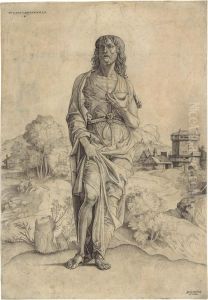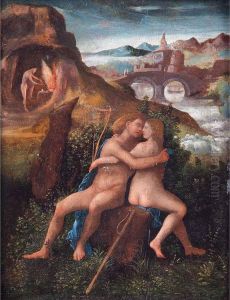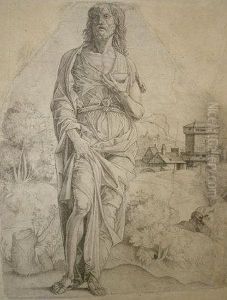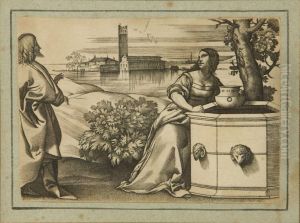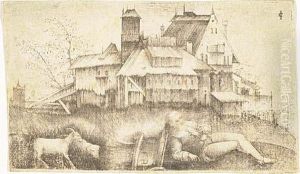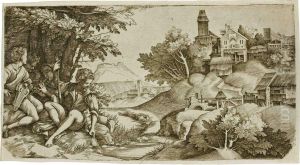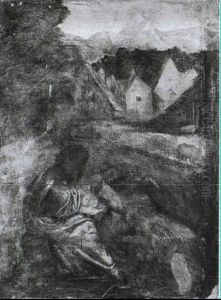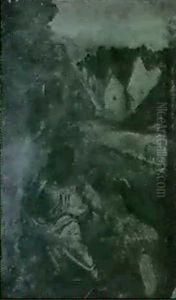Giulio Campagnola Paintings
Giulio Campagnola was an Italian engraver and painter, recognized for his contributions to the development of the engraving technique known as stipple or dotted manner. Born around 1482 in Venice, his early life is not well documented, and his family background remains somewhat obscure. However, it is believed that he may have been the adopted son of Domenico Campagnola, a painter and pupil of Giovanni Bellini.
Giulio's artistic career is primarily noted for his innovative approach to engraving. Influenced by the works of Albrecht Dürer, who visited Italy in the late 15th and early 16th centuries, Campagnola adapted the German master's techniques to his own distinctive style. His engravings are characterized by a delicate use of dots and light flicks to create gradients of tone, which was a significant departure from the traditional line engravings of the time.
Although Campagnola's painting career is less documented than his engraving work, it is believed he was also active as a painter in the Venetian school, possibly producing works in the style of Giorgione or Titian, who were the leading Venetian artists of the period. His paintings, however, have not been definitively identified, and as a result, his reputation rests largely on his prints.
Campagnola's body of work is not extensive, with roughly a dozen engravings attributed to him. His most famous prints include 'The Young Shepherd', 'The Astrologer' (also known as 'The Philosopher'), and 'The Woman with Two Men', all of which showcase his mastery of the stipple technique. Despite the small number of his surviving works, his influence on the art of engraving was profound, and he is credited with inspiring later artists who further developed the stipple method.
The precise details of Campagnola's later life and death are unclear, but it is generally accepted that he ceased his artistic activity after 1515. The lack of information following this period has led to speculation that he may have died around this time, though some sources suggest he could have lived into the 1520s. Regardless of the uncertainties surrounding his life, Giulio Campagnola remains a significant figure in the history of printmaking for his contributions to the evolution of engraving techniques.
